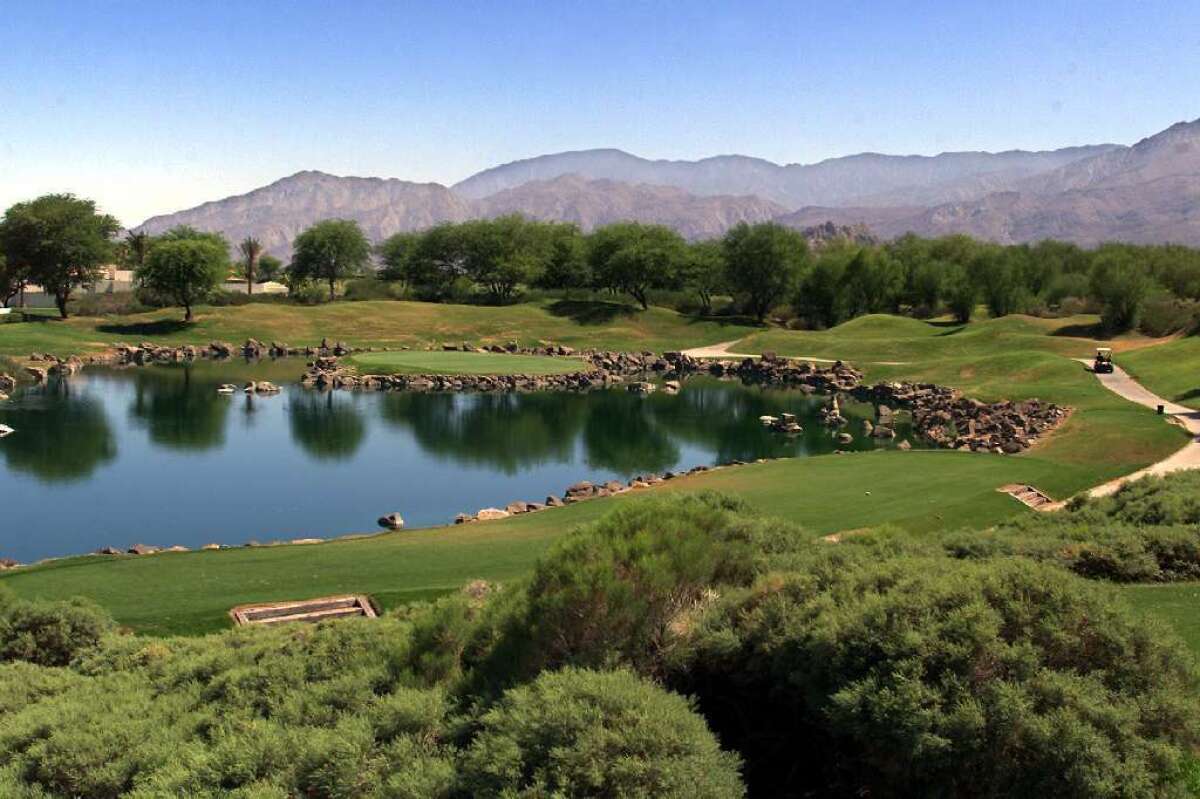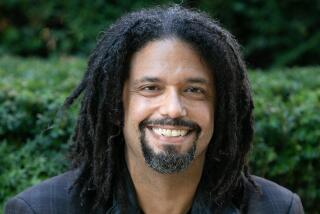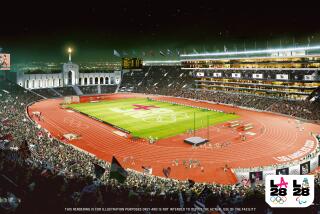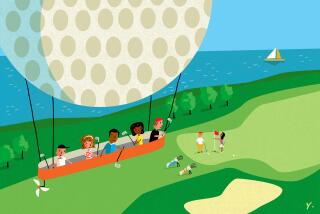PGA West Stadium Course is back in the desert rotation

The PGA West Stadium course will be the host site for this weekend’s CareerBuilder Challenge tournament in La Quinta, Calif.
In January 1987, golf architect Pete Dye was feeling like a high-profile producer whose pet project was about to take a first bow on Broadway.
Dye followed up his 1980 debut of the spectacular TPC Sawgrass in Florida, built for the Players Championship, with an even more diabolical layout, fashioned in the boonies of the Coachella Valley, 30 miles east of downtown Palm Springs.
They called it the PGA West Stadium Course, and it was opened in 1986 to put an entire housing and golf development on the map. As “Stadium” implied, it was expected that thousands would watch PGA Tour golf there for decades to come.
The Stadium course oozed drama. It was stunning in its beauty and treachery: nine holes lined with water, vast waste bunkers, a 20-foot-deep greenside pit at No. 16, and an island green on the par-three 17th that is the rock-strewn twin to the one at Sawgrass.
Offered Times sports columnist Jim Murray upon seeing it, “You need a camel, a canoe, a priest and a tourniquet to get through it.”
Then the tour players showed up for the 1987 Bob Hope Classic, and Dye spent the five days of the tournament figuratively dodging the rotten fruit thrown onstage.
His baby was a flop.
“They condemned it, and I was sick,” Dye said in a 2006 interview.
The pros begged off and the tour caved. The Stadium was one-and-done. Or so Dye thought.
Now 90, he has lived to see a revival.
After 29 years, the PGA Tour is back, with the Stadium as the new home course this week as a fresh title sponsor stages the CareerBuilder Challenge at the tournament Bob Hope built.
A second public layout, the Nicklaus Tournament Course, next to the Stadium, also joins the rotation with La Quinta Country Club after the PGA West Palmer and Nicklaus private courses opted out.
The Palmer course, with its photogenic stretch of finishing holes — not to mention wonderful cameo appearances from grazing bighorn sheep — produced compelling television, including David Duval’s closing 59 in 1999.
If a course can be an equal, it’s the Stadium.
“There are moments that can happen only on that golf course,” said NBC Sports golf producer Tommy Roy, who is leading the team doing the broadcast this week.
Like in that first tour visit in ‘87, when House Speaker Tip O’Neill, on national TV, found himself in the two-story ditch at 16, dubbed “San Andreas fault.” After three unsuccessful swipes with his club, O’Neill picked up his ball and hand-wedged it out.
The tour players that year averaged more than 74 strokes on the Stadium, and the masochistic amateurs fought to break 100. Poor David Edwards. His confidence soared with an opening 61 at Indian Wells, then the Stadium crushed him the next day with a 74.
Short-hitting but accurate, Corey Pavin prevailed to win that year with a total that was seven shots higher than the previous champion.
Understand, the Stadium course was stretched to 7,114 yards, or 700 longer than Indian Wells. Club and ball technology was not yet super-charged, so mid-irons were required to go for greens and plenty of tour players offered harsh complaints after missing their targets.
This week, the players will have mostly wedges and nine-irons into the greens, can attack all but one of the par-fives with their second shot, and the hole placements will be kind so as not to torture the amateurs.
In a way, the tour has collected test cases from the Stadium, staging six editions of its Qualifying School there since 2004. The Dye course is neither a pushover nor a beast, yielding a 72.19 scoring average. Two 63s stand as the course record, by Q School competitors Whee Kim (2012) and Jonathan Fricke (2008).
The Nicklaus Course also was part of Q School, and Harrison Frazar fired a 59 there in 2008.
Charley Hoffman, the 2007 Hope champion and a runner-up last year, played in Q School at the Stadium and came away undaunted, but with a healthy respect.
“If you look back at the holes, from the green to the tee, Pete Dye gives you plenty of room to hit shots,” Hoffman said this week. “But if you hit off line, you’re going to be standing on your head on some shots.
“He’s a magician at visually intimidating you off the tee and going into the greens.”
As the director of golf for the PGA West courses, Darrin Harn has seen a steady stream of tour players recently showing up to try the courses. He’s struck by how many already know them through Q School.
“You hear mixed reviews,” Harn said. “Some guys love the Stadium and don’t care for the Nicklaus at all. Others don’t like the Stadium but love the Nicklaus.
“I’m excited for the week. I look at this as the rebirth of the Stadium. It got such a bad rap that first time. Now we have them back, and it’s a totally different game than it was.”
tod.leonard@sduniontribune.com
More to Read
Go beyond the scoreboard
Get the latest on L.A.'s teams in the daily Sports Report newsletter.
You may occasionally receive promotional content from the Los Angeles Times.










